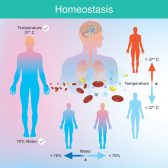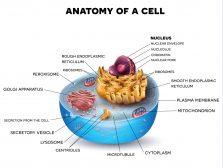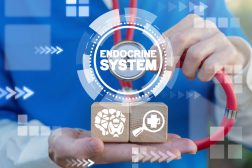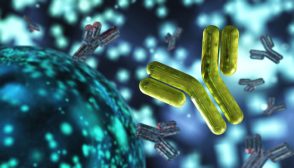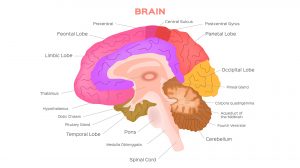Table of Contents
Definition
noun
plural: thymidines
thy·mi·dine, ˈθaɪ mɪˌdin
A pyrimidine nucleoside that has thymine attached to the pentose sugar deoxyribose
Details
Overview
A nucleoside is a nucleobase with a five-carbon sugar (either ribose or deoxyribose). It is a glycoside formed from the hydrolysis of nucleic acid. A pyrimidine nucleoside is one in which the nucleobase is a pyrimidine, such as thymine in thymidine. Thymidine is a nucleoside consisting of thymine and deoxyribose. When a phosphate group is covalently attached to the sugar, it forms a nucleotide. An example of a nucleotide wherein three phosphate groups are attached to thymidine is thymidine triphosphate (TTP), one of the building blocks of DNA synthesis.
Characteristics
Thymidine is found in all living organisms as a structural component of DNA. The chemical formula is C10H14N2O5. Its molar mass is 242.229 g/mol. Chemically, it occurs as white crystalline powder. Thymidine is a deoxyribonucleoside due to its deoxyribose sugar. It is also referred to as deoxythymidine. The prefix deoxy- is often left out since there are no precursors of thymine nucleotides involved in RNA synthesis, only DNA synthesis. Hence, it is sometimes simply called thymidine. Thymidine pairs up with deoxyadenosine in a double-stranded DNA.
Common biological reactions
Common biological reactions
Nucleosides such as thymidine can be produced by de novo synthesis pathways in the liver. Nevertheless, they may also be obtained from the diet. When the diet contains nucleotides, the body digests them by nucleotidases to produce nucleosides and phosphates. Nucleosides are degraded into their subcomponents (i.e. nucleobases and sugar) by the action of nucleosidases in the lumen of the digestive tract. Some of the dietary sources of thymidines are DNA-enriched foods such as fish, beans, and legumes.
Biological functions
Thymidine, just as the other nucleosides, can give rise to nucleotides. When phosphorylated by kinases, the nucleoside is converted into a nucleotide. Thus, a nucleotide is a nucleoside with a phosphate group. Thymidine can form deoxythymidine monophosphate (dTMP, i.e. thymidine with a single phosphate group), deoxythymidine diphosphate (dTDP, i.e. thymidine with two phosphate groups), and deoxythymidine triphosphate (dTTP, i.e. thymidine with three phosphate groups). dTTP, in particular, is one of the building blocks for the formation of DNA and pairs up with deoxyadenosine triphosphate (dATP). It could also occur in tRNA, particularly in the T-loop.
Medical importance
Iododeoxyuridine, a modified thymidine, is used as a topical treatment against herpes simplex keratitis. Azidothymidine, a thymidine analogue, is an antiretroviral agent used for treating HIV/AIDS. It can inhibit the process of reverse transcription in the life cycle of HIV.
Supplementary
IUPAC
- 1-(2R,4S,5R)-4-hydroxy-5-(hydroxymethyl)oxolan-2-yl-5-methylpyrimidine-2,4-dione
Chemical formula
Synonym(s)
- deoxythymidine
- 5-Methyl-2′-deoxyuridine
- thymine deoxyriboside
- deoxyribosylthymine
Further reading
See also
Reference
- Machado-Vieira, R., Salvadore, G., DiazGranados, N., Ibrahim, L., Latov, D., Wheeler-Castillo, C., Baumann, F., Henter, I.D., & Zarate, C. A. (2010). “New Therapeutic Targets for Mood Disorders”. The Scientific World Journal, 10: 713–726. doi:10.1100/tsw.2010.65.
© Biology Online. Content provided and moderated by Biology Online Editors

